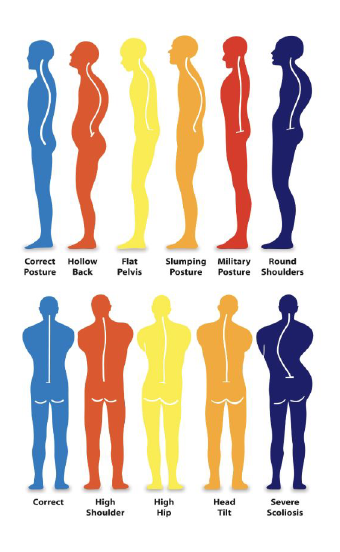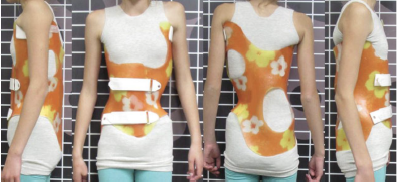Scoliosis is an abnormal curvature of the spine.
As healthcare professionals, we’re always looking for lateral and rotational components when assessing an individual’s spine. If a scoliosis is detected, the curvature is typically named by it’s shape and lateral convexity. A scoliotic spine can develop into a C-curve or S-curve and will commonly affect the thoracic spine with occasional compensation from the lumbar spine.

It is important to understand that a scoliosis can be structural (or static) or functional (or dynamic). Also the younger the patient is at diagnosis, the higher risk of progression or complication, and females are unfortunately 10 times more likely to develop curve progressions.
Structural scoliosis develops during childhood and cannot be corrected with postural-specific exercises. When static scoliosis is diagnosed in a young individual, physicians will generally recommend surgery and/or bracing to avoid any spinal progressions through their adolescent years. Surgical procedures are typically considered when curvatures exceed 45 degrees of deviation. As for bracing, individuals are required to wear a customized brace for up to 22 hours every day. The goal of bracing is to unload the compressed side of the curve and increase loading on the elongated (or stretched) side.

Functional scoliosis is manageable and can be corrected with scoliosis-specific exercises. This type of curvature will most commonly develop in adulthood from severe muscle imbalances and certain bad habits. A conservative method has been shown to be the best approach for treating cases of dynamic scoliosis. If they suspect a functional scoliosis, our physical therapists at Core Performance Physical Therapy will address that individual’s flexibility, strength and muscle imbalance through the thoracic spine, core and pelvic girdle.
Ultimately, individuals diagnosed with scoliosis (structural or functional) have a wide variety of treatment options that can help them reduce overall discomfort and allow them to return to their daily activities. We understand that treating scoliosis is “a work of art” and that there is no one-size-fits-all!
Listed below are references to different school of thoughts on scoliosis-specific exercise programs:
- The Lyon Approach 1 2
- The Schroth Method 12
- The DoboMed Method 1 2
- The Functional Individual Therapy of Scoliosis (FITS) Method 1 2
Also, we’ve attached an interesting video from Edward Paget on How to Correct a Scoliosis With Exercise and Stretching:
Click here to view.

Comments